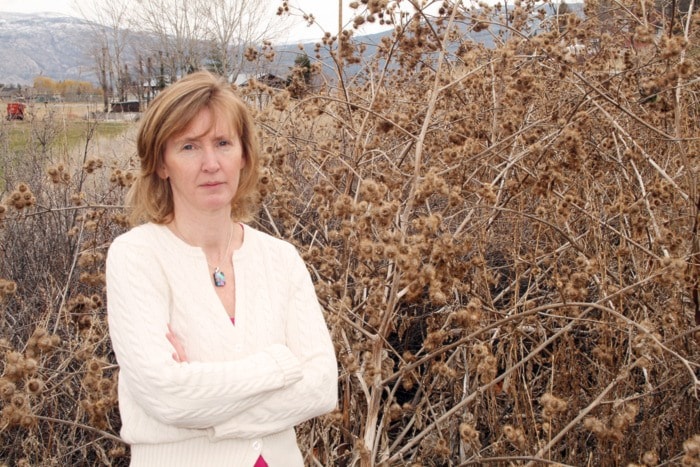When a small orange crowned warbler was caught in a patch of burdock on Dale Meadows Road, members of the Summerland Environmental Science Group decided to take action.
Burdock, an invasive weed which originated in Europe, has been in Summerland for several decades.
The biennial plant is characterized by its burrs, which can cling to clothing, hair, fur or feathers with their barbed hooks.
Lisa Scott, a plant biologist, said the problems caused by the weed became evident when the bird was caught recently.
“It obviously warrants more attention due to the direct impact it has on wildlife,” she said.
There are patches of burdock throughout the community, mainly on roadside ditches and along creeks and waterways. The plant is a biennial. In its initial stages, it resembles rhubarb, but later it becomes a bushy hedge.
Scott said those trying to clean out the plant in the first year should dig out the root.
In the second year, the plant should be cut down. If it has gone to seed, the seed pods should be bagged and taken to the landfill.
Most importantly, Scott said the area should be seeded or planted to provide competition for any burdock seeds still remaining.
“Hopefully, you can outcompete the burdock,” she said.
She added that the plant is likely in the community to stay.
“I don’t think we’ll eliminate it, but we can definitely reduce it,” she said. “It will take everyone’s cooperation.”
